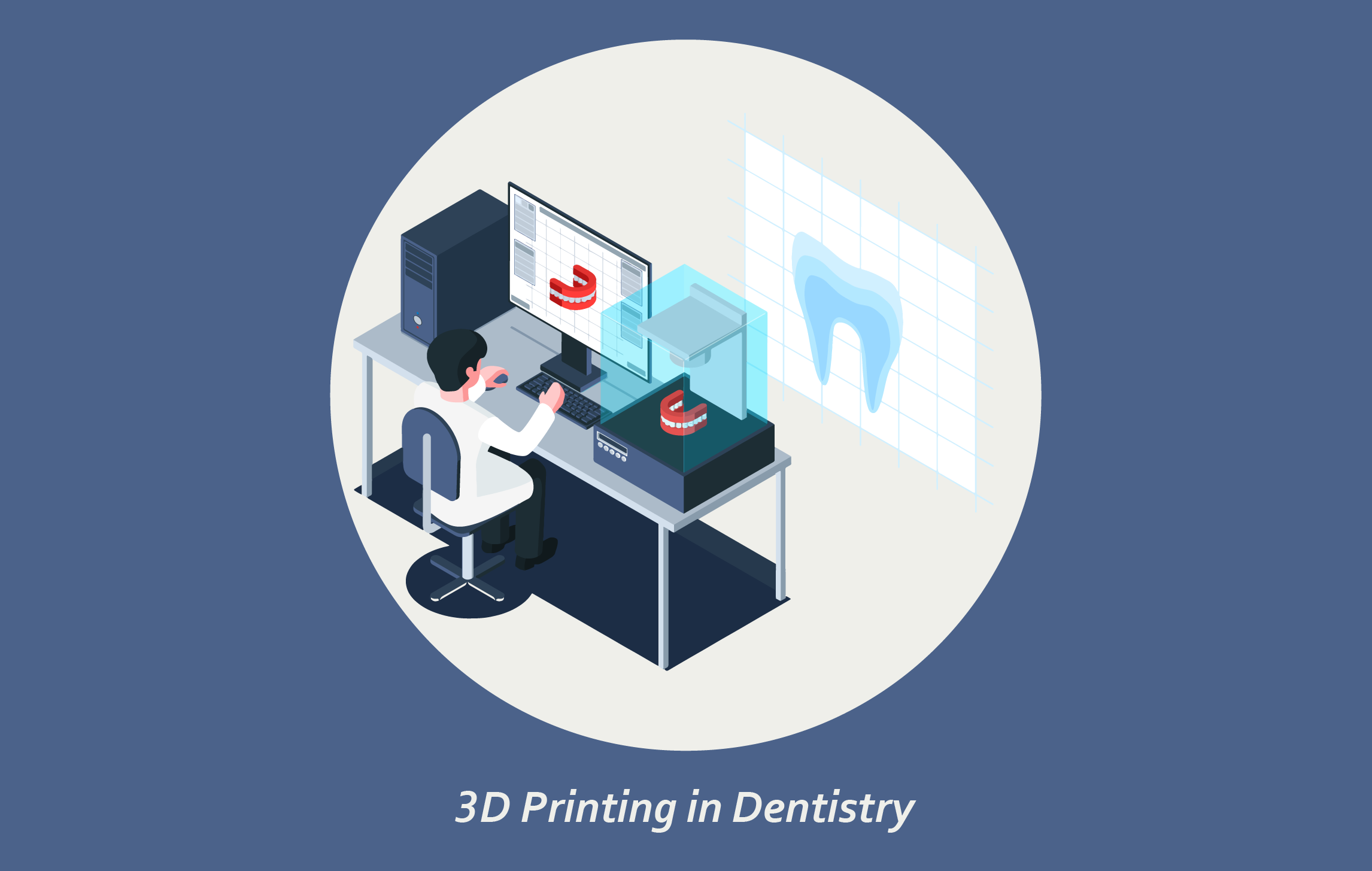Digital 3D Printing in Dentistry
Dental 3D printing is a process that creates three-dimensional objects from a digital model. Layer by layer, the 3D printer constructs the object using specialized dental materials. This technology allows dental professionals to design and create precise, customized dental restorations and appliances in their office or dental lab. Today, 3D printing has become more attainable and makes personalized dentistry more accessible and efficient, benefiting both clinicians and patients. With dental 3D printing, dentists can deliver more accurate, cost-effective, and time-efficient treatments to patients.
From Scans to Smiles: The Digital Journey
Traditional dentistry often relied on manual processes and physical impressions to create dental restorations. However, with 3D printing, dentists can now seamlessly transition from digital scans to the creation of lifelike dental models. This digital journey paves the way for enhanced treatment planning and customization, ultimately resulting in impeccable smiles.
Personalized Perfection: Custom Dental Solutions
One of the most remarkable aspects of 3D printing in dentistry is its ability to deliver highly personalized dental solutions. Every patient has unique dental needs, and 3D printing enables dentists to create bespoke prosthetics, aligners, and surgical guides tailored to each individual. By using patient-specific data, such as the shape and dimensions of their teeth, 3D printers can fabricate dental restorations with exceptional precision and accuracy. This personalization not only improves the fit and functionality of the prosthetics but also enhances patient satisfaction and comfort.
Tranforming Dental Labs: In-House Production
In the past, dental labs would often outsource the production of dental prosthetics, leading to longer turnaround times and increased costs. However, 3D printing has revolutionized the way dental labs operate. With the advent of desktop 3D printers, dental professionals can now bring the manufacturing process in-house. This not only reduces production time but also allows for more efficient workflows, quick adjustments, and better quality control. In-house 3D printing empowers dentists to provide prompt and reliable dental solutions, significantly improving the patient experience.
Beyond Teeth: Advancements in Biocompatible Materials
3D printing has sparked a wave of advancements in the development of biocompatible materials specifically tailored for dental applications. From resins to ceramics, these materials mimic the natural aesthetics and durability of teeth while ensuring compatibility with the oral environment. With a wide array of materials at their disposal, dentists can choose the most suitable option for each patient, taking into account factors like strength, aesthetics, and long-term performance. This flexibility allows for the creation of dental restorations that seamlessly blend with the patient's existing teeth, resulting in beautiful, functional smiles.
Bridging the Gap: 3D Printing in Dentistry Education
Apart from its clinical applications, 3D printing has also found a valuable place in dental education and training. Dental students and professionals can leverage this technology to enhance their understanding of complex dental anatomy, practice surgical procedures using 3D-printed models, and gain hands-on experience before treating patients. The ability to experiment with different scenarios and simulate challenging cases accelerates the learning curve, equipping future dentists with the skills required to deliver exceptional patient care.
The development of 3D printing has ushered in a new era in dentistry, where precision, personalization, and efficiency reign supreme. From capturing digital impressions using an intraoral scanner to producing customized dental restorations, this technology has transformed the way dental professionals approach patient care. In the near future, we can expect 3D printing to play an even more important role in dentistry.
Related Products
Submitted successfully
We will contact you as soon as possible



